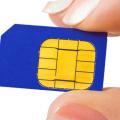The laptop cannot see the touchpad. How to enable and configure TouchPad and laptop keyboard if they don't work
How to activate, deactivate the touchpad on ASUS, Samsung, Lenovo, Acer laptops. Turn on and off the touchpad on the laptop. In some cases, the TouchPad may become disabled on laptop PCs for specific reasons. Sometimes users disable themselves touch pad because it interferes with the keyboard.
There are a number of options for how to enable the touchpad and keyboard on a laptop, however, when using them, you must take into account the brand of the computer device. Indeed, for specific models, various activation methods are used.
Regardless of the device company, first of all, a reboot is required. Probably there was some mistake and after these actions everything will fall into place. On most laptops, a certain combination of buttons is preinstalled to enable the touchpad. Only for different brands, it is slightly different.
To activate the touchpad, developers most often use a combination of the Fn key and one of the F1 F12 function buttons. Each manufacturer has a specific combination, but individual buttons may be similar.
Carefully study the above keys on one of them, for sure you will find the touchpad logo. The label, in most cases, shows a crossed out touchpad, touchpad with a finger, or a mouse. After finding the desired key, hold down Fn and add a button with a touchpad pattern to it.
On certain models of computer devices, the touch panel is controlled using a key specially allocated for this purpose. Also, on some HP devices, a key is located on the touch area of the touchpad. By clicking on it twice, you can enable or disable it. When disconnected, this button is illuminated by a light emitting diode.
Notebook PCs have special settings that allow you to control whether the touchpad is disabled when the mouse is activated. This is quite convenient, if you activate the mouse, then it is most logical to disable the touchpad, because you plan to use another device to control your computer.
Therefore, if you have disabled the panel, and you want to enable, then disconnect the mouse. If these steps do not bring positive results, try restarting the laptop with the mouse disconnected. In that situation, if you do not need the touchpad to turn off automatically, you have the opportunity to go into the settings and cancel this option.
To activate the touchpad on a laptop so that it functions simultaneously with the mouse, you must click "Start" and go to the "Control Panel". In the upper right corner, select "View" "Small icons", click "Mouse". In the "Parameters" tab, undo the "Disconnect when turning on an external USB mouse" option. After these manipulations, the touchpad should work in parallel with the mouse.
If all of the above tips did not help, the cause is probably a malfunction of the touchpad or a disconnection of the contacts. In such a situation, it is necessary to disassemble the computer and check the connections. Sometimes it may be necessary to replace the touch panel. It is better to trust this work only to specialists.
A laptop is the ideal portable desktop replacement. Even smartphones cannot compete with sleek, thin and high-performance laptops. Moreover, this laptop does not require any additional keyboard or a mouse, because they are already included with the laptop.
But what if the laptop does not work touch mouse or just a touchpad? Using a laptop without a mouse is like chewing food without teeth. Therefore, we decided to compose detailed instructions to solve this problem. If your laptop keyboard and touchpad are not working, be sure to try the following solutions.
You may have accidentally disabled the touchpad
Each laptop has a function key that allows you to turn on / off the touch mouse. However, each laptop manufacturer uses its own combination function keys so you should take a close look at the images on top of the F1 - F12 keys. For example, on an Asus laptop, this is the Fn + F9 combination.

On Lenovo, Dell, HP, Toshiba, Acer and Asus laptops, you can try the following keyboard shortcuts:
- Fn + F6
- Fn + F9
- Fn + F12
- Fn + F5
Reinstall the touchpad drivers on the laptop
Download the touchpad and keyboard drivers from the laptop manufacturer's official website. Use the following Google query to get a quick result:
Laptop Model + Drivers + Operating System Version
For example: Dell Inspiron 15R Windows drivers 8.1

Enable touchpad in BIOS settings
Also, the touch mouse and keyboard may not work on the laptop due to a BIOS setting failure. You should check your settings by following these steps:
1. Restart your computer. When the logo appears motherboard, press DEL, F2 or F10 to enter BIOS setup.
2. Use the arrow keys on your keyboard and the Enter key to navigate through the BIOS settings.
3. Go to the next section:
System Properties> Keyboard / Mouse Features> Device Options

4. Here find the "Internal Pointing Device" option, press the "Enter" key and use the arrow keys to select the "Enabled" option.
Reboot your laptop
This is a fairly simple solution that helps some users who have laptop touchpad and keyboard not working.
Shut down your laptop, take out the battery for about a minute. Put the battery back in and turn on the laptop.
Perhaps these are the simplest and most popular solutions to the problem when a touch mouse, touchpad or keyboard on a laptop does not work. If none of the solutions worked for your situation, you will most likely have to contact a service center.
If the touchpad does not work on your laptop, there may be several reasons for this.
Touchpad does not work:
the reason is disabled in the settings.
Depending on your laptop model, the touchpad can be enabled / disabled in different ways. In general, this is done by pressing and holding the Fn + key with the F1-F12 buttons.
For each individual model, the on / off options may differ. Look closely at the keyboard and look for the touchpad label near the F1… 12 buttons. It looks something like this:
Hold down the Fn + button and press the touchpad button. In most cases, this will help.
Touchpad not working: problem with drivers
When you insert a mouse into your laptop, the touchpad will often turn off automatically. If you want it to start working again, remove the mouse from the port.
Touchpad does not work: disabled in BIOS
Some laptop models are automatically released with the touchpad disabled in BIOS settings... To enable it, do this:
1. Restart your computer. While loading it - click Del or F2. You will be taken to the BIOS.
2. Find the Internal Pointing Device item and enable it.
Touchpad does not work:
old / not working drivers.
1. Start - Right click on Computer - Properties.
2. Look for Mice and Other Pointing Devices in the list of devices. Find the touchpad and go to its properties.
3. Go to the "Driver" item and update the drivers for this device automatically, or download the latest driver version from the laptop manufacturer's website and install it.
Ready. One of the proposed methods will definitely solve the problem with a non-working touchpad on a laptop.
The touchpad is an integral part of a laptop, and even if you usually use a mouse, a malfunctioning touchpad is a significant problem. Therefore, we will correct it.
First, it's worth checking if your touchpad is turned on at all. In most cases, the touchpad is enabled by a keyboard shortcut that differs depending on the laptop manufacturer.
Laptops Acer- Fn + F7.
Laptops Asus- Fn + F9.
Laptops Lenovo- Fn + F8 (on some F6 models).
Laptops Dell- Fn + F5.
Laptops Toshiba- Fn + F9.
Laptops Sony- Fn + F1.
Laptops Samsung- Fn + F5 (on some F6 models).
Laptops MSI- Fn + F3.
Laptops Packard bell - Fn + F6.
In more detail, including Windows tools we described earlier.
If turning on the touchpad using the keys or Windows tools did not help, your touchpad may be disabled in the BIOS.
To enable it, go to BIOS () and here, you need to find the tab responsible for enabling the laptop's touchpad. As a rule, it is located in the tab Advanced and called Internal Pointing Device... If in front of this item you have an inscription Disabled, then the touchpad is still disabled, to enable we change the value to Enabled and press the F10 key to save the settings.

If enabling the touchpad in the BIOS settings did not help you, i.e. the touchpad still does not work for you, so the problem is most likely in the device driver.
In order to update your device driver by going to Device Manager, open the tab Mice and other pointing devices, click right click mouse, on the required device and select the item Update drivers.

In the window that opens, select the item Automatic search updated drivers, this requires an internet connection.
If there is no Internet connection, or you get a message that the device does not need an update (which in fact may turn out to be incorrect), in this case, you need to go to the laptop manufacturer's website, download latest drivers for the touchpad and set them manually by selecting Search for drivers on this computer.
 Wireless Charging Smartphones A5 Supports Wireless Charging
Wireless Charging Smartphones A5 Supports Wireless Charging Why do not MTS sms come to the phone?
Why do not MTS sms come to the phone? Why do you need a full reset on Android or how to return Android to factory settings
Why do you need a full reset on Android or how to return Android to factory settings